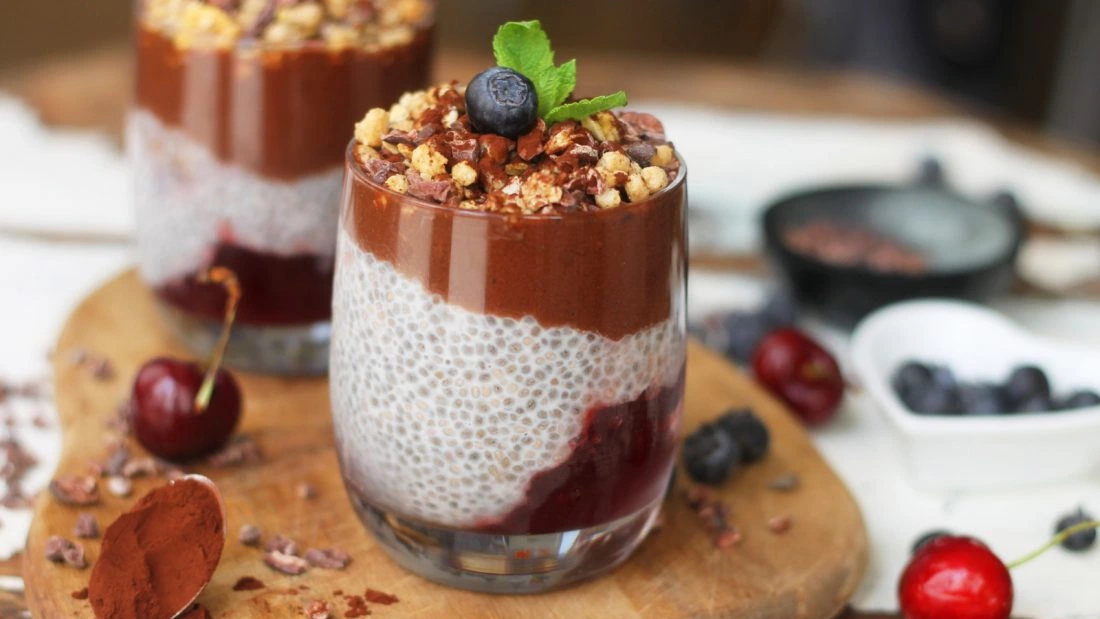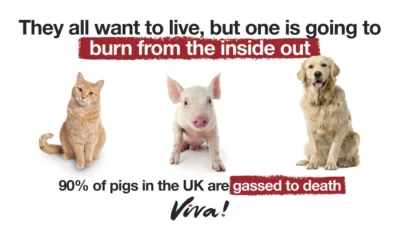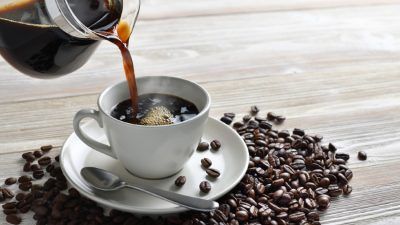10 foods to add to your diet in 2025

What better time than new year to make some positive changes to your diet? Huge resolutions and complete lifestyle overhauls can be hard to maintain but here are 10 overlooked or forgotten foods you can easily add to your diet without completely changing what you eat. Each one offers a specific health benefit you could take advantage of for a healthier you in 2025.
1. Kimchi
Kimchi is a fermented vegetable dish originating from Korea. Because it is fermented it contains probiotic bacteria which can help keep your gut healthy. Research suggests that fermented foods, such as kimchi, may have anti-cancer, anti-obesity, antioxidant and anti-ageing properties, as well as promoting a healthy digestive system and supporting good brain health. Kimchi can be added to stir fries, salads, burgers and sandwiches for a little spicy kick. If you’re buying it from an Asian supermarket, just make sure it doesn’t contain any fish or shrimp paste – vegan versions are widely available.
2. Seaweed
Staying on the Asian continent, the next food you could eat more regularly is seaweed. Small amounts of seaweed (especially nori, arame and wakame) are an excellent source of iodine as a part of a varied, vegan diet. Iodine is essential for the production of the hormones thyroxine and triiodothyronine in the thyroid gland – these regulate how energy is produced and used up in the body. Dried seaweeds can be eaten on their own as a crispy snack, shredded in salads and noodle dishes, as well as with vegan sushi or tofish.
3. Flaxseeds (linseeds) and chia seeds
Adding flax or chia seeds to your diet is a great way to boost your omega-3 intake. Flax and chia seeds contain alpha-linolenic acid (ALA), an essential omega-3 fatty acid, which our body converts (with varying degrees of success) to eicosapentaenoic acid (EPA) and docosahexaenoic acid (DHA). However, ALA is an important nutrient in its own right and may protect against cardiovascular disease. Flax and chia are easy to add to your diet – but you just need to make sure they are ground or soaked before use so that you can digest them properly (once ground, store in the freezer to preserve freshness). Easy, no-fuss ways to eat them include adding a heaped dessert spoon of ground seeds to porridge, muesli, vegan yoghurt and smoothies, or making chia pudding by soaking chia seeds overnight in some dairy-free milk with some berries, nut butter, cocoa (and whatever else you fancy) and enjoying for breakfast.
4. Sesame seeds and tahini
For many people, the only time they consume sesame seeds is on top of a burger bun. And while there’s nothing necessarily wrong with that (as long as it’s a vegan burger!), we probably shouldn’t be eating burgers everyday just to get some sesame seeds. Sesame seeds are a great source of calcium and contain natural lignans, such as sesamin and sesamolin, which have anti-inflammatory, antioxidant and anti-cancer properties. They also have a protective effect on the heart, liver and kidneys. An easy way to consume sesame is in tahini, which is made from ground sesame and is found in hummus and makes a great condiment for falafels. It can also be used to make a lovely, creamy dressing for salads, roast vegetables, grain bowls, wraps and more.
5. Vitamin D mushrooms
Any edible mushroom is a great source of protein, fibre and a whole host of vitamins and minerals but vitamin D mushrooms are also a great source of… you guessed it… vitamin D! For vegans, our only other sources of vitamin D are sunlight, supplements and fortified foods. However, when mushrooms are grown in UV light, they produce their own vitamin D. Vitamin D is necessary for the regulation of calcium levels in the blood and is needed for healthy bones as it helps your body absorb calcium. It also regulates phosphate levels. These nutrients are important to keep bones, teeth and muscles healthy. Luckily, most supermarkets label their vitamin D mushrooms so you’ll know which ones to pick next time you’re mulling over the mushrooms.
6. Blackstrap molasses
Blackstrap molasses are a byproduct of sugar production but its nutritional profile trumps sugar in every regard. Blackstrap molasses is mainly sugar but unlike refined sugars, it is packed full of vitamins and minerals, especially iron. Just one tablespoon of blackstrap molasses contains 20 per cent of your daily requirement of iron. This not only makes it great for those with anaemia but for anyone who cares about getting a steady supply of this important mineral. However, it is still high in sugar so should be eaten in moderation.
7. Dark chocolate
Chocolate gets a bad rep but that’s mainly because it often contains more sugar and dairy than actual cocoa. Cocoa contains many powerful phytochemicals and some essential nutrients, such as protein, iron and magnesium. Cocoa packs some strong antioxidants that help fight inflammation and support our immune system. However, probably the strongest of cacao’s phytochemicals is phenethylamine (PEA); a compound that stimulates the nervous system and triggers the release of endorphins – aka ‘happy hormones’. But that’s not all – PEA can also stimulate the release of dopamine, a potent neurochemical linked to pleasure.
It may seem unnecessary to encourage you to eat more chocolate, but remember, to get the most out of cocoa, you should reach for dark chocolate – between 60 and 99 per cent – as this has the highest cocoa content and the lowest sugar content.
8. Brazil nuts
We all know that a handful of walnuts is a great source of omega-3 fats but Brazil nuts often only come out at Christmas and if they’re covered in chocolate. Brazil nuts are a great source of selenium and just two a day can increase the selenium in your blood by 60 per cent! Selenium is a key part of our cell defence mechanism and acts as an antioxidant – protecting cell membranes and DNA from damage. It is also needed for the correct functioning of the thyroid gland and plays a role in fertility – selenium helps protect the ovaries and sperm from free radical damage. So make a couple of Brazil nuts a day part of your morning snack.
9. Green tea and matcha
You don’t have to forsake your oat latte or builder’s brew but consider squeezing a cup of green tea into your daily drinking schedule. Green tea and matcha both come from the same tea plant (Camellia sinensis) and although there are differences in how they are produced, the main difference is that green tea is made by steeping intact tea leaves whereas matcha is made from powdered green tea leaves. Green tea and matcha are richer in antioxidants than other forms of tea and have been linked to a wide range of health benefits. The main antioxidants in green tea – known as catechins – have anti-inflammatory and anti-cancer properties, having been shown to play a role in the prevention of many cancers. The antioxidants also reduce skin ageing and lower risk of neurodegenerative diseases, including Alzheimer’s. It’s time to go green!
10. Broccoli sprouts
If you want to advance to the highest level of plant-based eating, you have to get serious about sprouts. All microgreens, including pea shoots, are nutritional powerhouses but nothing beats the broccoli sprout. They are jam-packed with protein and fibre but their main selling point is their incredible concentration of glucoraphanin, which our body converts to sulforaphane. This is the compound in broccoli that researchers believe has anti-inflammatory and anti-cancer properties. Broccoli sprouts contain 20 times more glucoraphanin than broccoli so if anything deserves the title of superfood, it’s these little sprouts. You should be able to buy them in most greengrocers and wholefood shops, and you can even grow them at home in your kitchen if you want an easy little horticulture project.
Make 2025 the year to try some new foods and tick off the boxes for all those important vitamins and minerals that might have been overlooked until now. Future you will be grateful!







